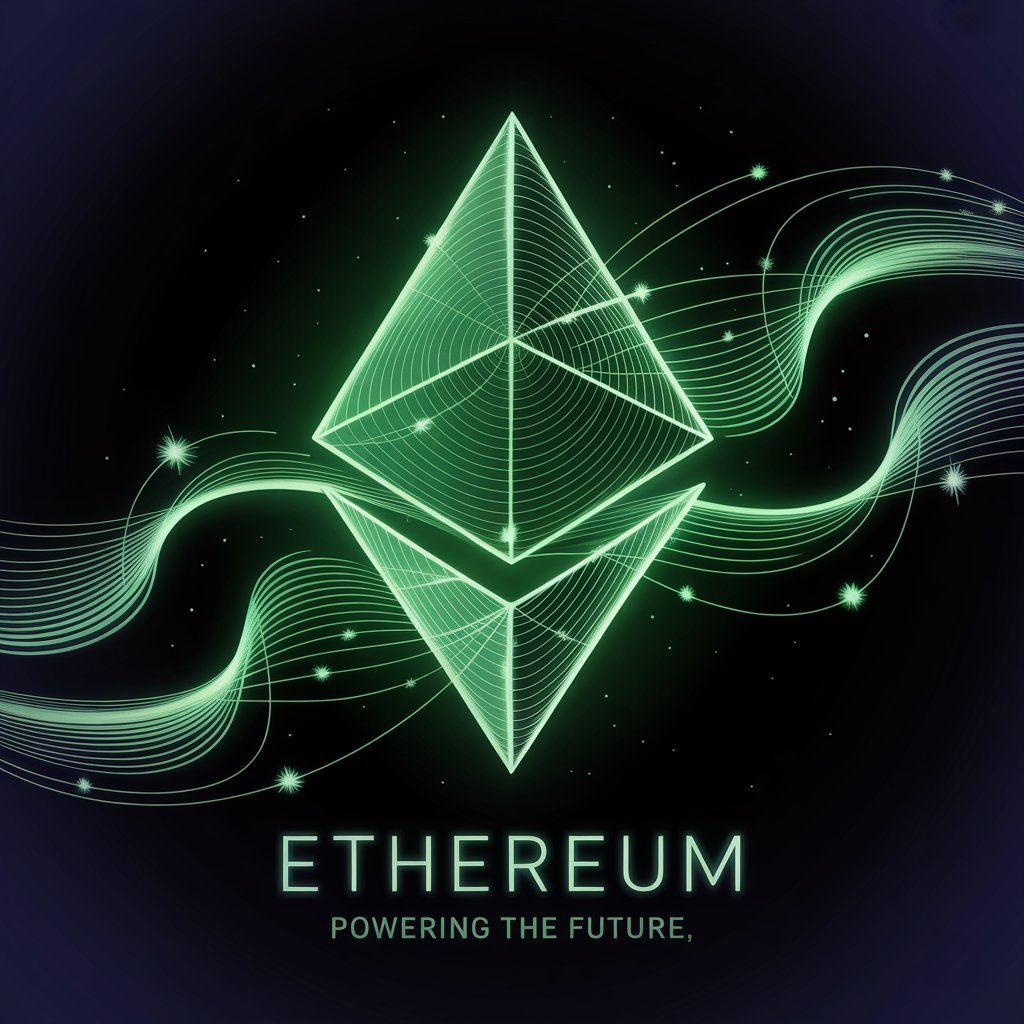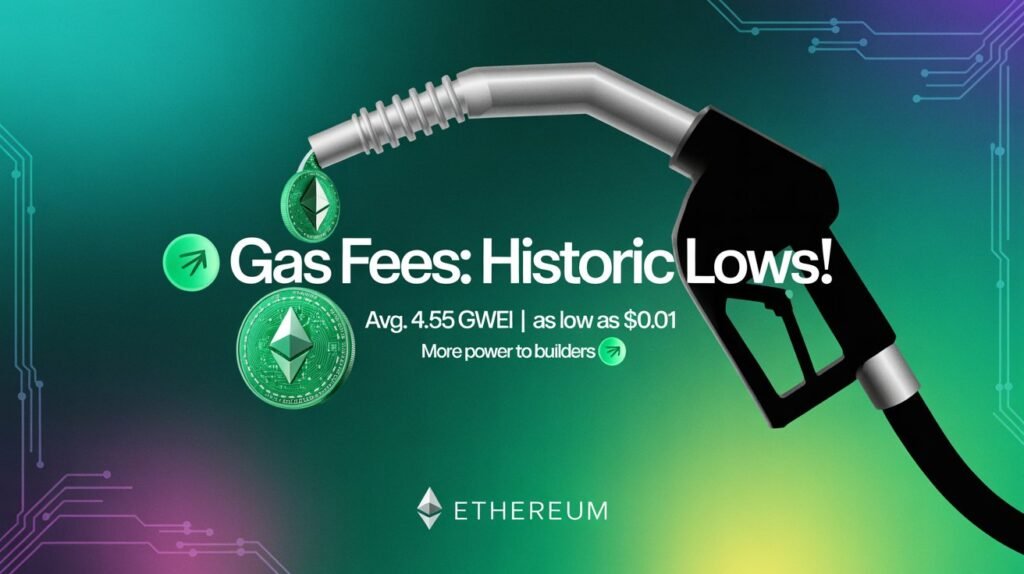Ethereum gas fees have made headlines for all the right reasons in May 2025. Ethereum (ETH), the world’s second-largest blockchain network, has seen its notoriously high gas fees plummet to multi-year lows, offering users and developers a much-needed breather—and setting the stage for renewed growth across decentralized finance (DeFi), non-fungible tokens (NFTs), and Web3.
From the Dencun upgrade to widespread Layer-2 adoption, here’s a breakdown of what’s driving this drop and what it means for the future of the Ethereum ecosystem. Nexobytes dives into this game-changing development, its drivers, and its implications for the Ethereum ecosystem. Join our Web3 community for cutting-edge crypto insights!
Table of Contents
- What Are Ethereum Gas Fees?
- Ethereum Gas Fees Hit Record Lows
- Why Are Ethereum Gas Fees So Low?
- The Flip Side of Low Fees
- What This Means for Ethereum’s Ecosystem
- Ethereum Market Overview
- Final Thoughts
⛽ What Are Ethereum Gas Fees?
Ethereum gas fees in 2025 are making headlines for their dramatic decline. But what exactly are gas fees? They’re small payments in ETH required to execute actions on the Ethereum blockchain, such as transferring tokens, minting NFTs, or running smart contracts. These fees, measured in gwei (1 gwei = 10⁻⁹ ETH), vary based on network demand.
Historically, high gas fees during bull markets have priced out retail users, but 2025 tells a different story.
📉 Ethereum Gas Fees Hit Record Lows in 2025
As of May 15, 2025, the average Ethereum gas price fell to approximately 4.55 gwei — a 55% decrease from a year ago. In some instances, users have reported transaction costs as low as $0.01.
This level of affordability hasn’t been seen in years and has made Ethereum more accessible than ever.
Quick Stats:
- 📊 Average Gas Price: 4.55 Gwei
- 💸 Typical Txn Cost: $0.01 – $0.10
- 📉 YoY Drop in Fees: Over 55%
🔍 Why Are Ethereum Gas Fees So Low?
Several key upgrades and shifts in network behavior have contributed to this dramatic drop in gas costs:
1. Dencun Upgrade (EIP-4844: Proto-Danksharding)
Launched in March 2024, the Dencun upgrade introduced a major breakthrough in how data is stored on Ethereum. By implementing Proto-Danksharding, the upgrade reduced data availability costs, benefiting Layer-2 rollups and reducing mainnet congestion.
2. Layer-2 Adoption Surge
Solutions like Arbitrum, Optimism, zkSync, and Base are now handling a large percentage of Ethereum’s transaction volume. These rollups execute transactions off-chain and settle on Ethereum, significantly reducing the workload on the mainnet and slashing gas costs.
3. Increased Gas Limit
Ethereum has increased the block gas limit to 36 million units, allowing more transactions to be processed per block. This means more throughput and lower competition per block — a direct contributor to lower fees.
⚠️ The Flip Side: What Lower Fees Might Signal
While lower gas fees are largely positive, they can sometimes hint at deeper market dynamics:
🔻 1. Reduced On-Chain Activity
Lower gas fees may reflect reduced network usage. Post-bull-market cooldowns often lead to fewer DeFi transactions and NFT mints — temporarily reducing congestion.
🔥 2. Less ETH Burned
Since Ethereum’s move to proof-of-stake (The Merge), gas fees play a role in burning ETH (removing it from supply). Lower fees = lower burn rates, which could impact Ethereum’s deflationary model.
🧠 What This Means for Developers, Investors & Users
✅ For Developers
More affordable fees mean more room for experimentation. Building dApps, testing smart contracts, or launching new protocols becomes more accessible.
✅ For NFT Creators & Traders
Minting NFTs or transferring assets on Ethereum is no longer cost-prohibitive. This could reignite interest in Ethereum-native NFTs.
✅ For DeFi Users
Affordable fees encourage more activity on platforms like Uniswap, Aave, and MakerDAO — especially from small retail users who were priced out previously.
📈 Ethereum’s Current Market Overview (As of May 17, 2025)
- 💰 Price: $2,488.40
- 📉 24h Change: -3.18%
- 🔼 Intraday High: $2,631.38
- 🔽 Low: $2,466.40
While the price has cooled slightly, the structural improvements on Ethereum are setting the foundation for the next wave of growth.



✨ Final Thoughts
Ethereum’s recent drop in gas fees is more than just a headline — it’s a turning point. With the Dencun upgrade, Layer-2 dominance, and network optimization, Ethereum is showing that scalability is no longer a distant promise.
The blockchain is becoming cheaper, faster, and more usable — opening the door for wider adoption, especially as mainstream interest in Web3 returns.
Stay tuned, because this may be just the beginning of Ethereum’s most efficient era yet.
👉 Explore our latest crypto blogs for more updates, trading tips, and market analysis.

